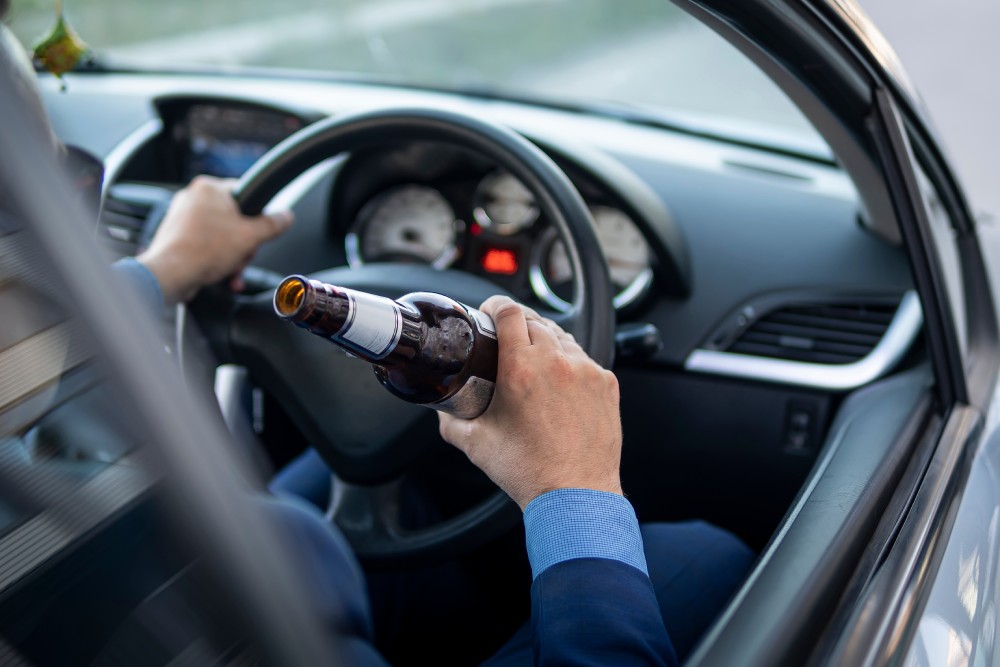Alcohol and driving don’t mix—everyone knows that. But what actually happens in your body that makes driving after drinking so dangerous? Understanding how alcohol affects reaction time, coordination, and decision-making can help you make smarter choices before getting behind the wheel.
How Alcohol Affects the Brain and Body
Alcohol is a central nervous system depressant, meaning it slows down brain function and reaction time. Even small amounts of alcohol can impair the ability to drive safely.
The effects of alcohol on the body depend on:
- The amount of alcohol consumed
- A person’s weight, metabolism, and tolerance
- Whether alcohol was consumed with food
- How quickly drinks were consumed
Stages of Alcohol Impairment
Alcohol doesn’t just suddenly impair you at the legal limit of 0.08% BAC. Different levels of BAC affect drivers in different ways:
0.02% BAC: Slight relaxation, minor loss of judgment, mild decline in visual function.
0.05% BAC: Reduced coordination, slower reaction time, impaired judgment, lower ability to track moving objects.
0.08% BAC (Legal DUI Limit): Loss of balance, reduced ability to concentrate, poor reaction time, difficulty controlling speed.
0.10% BAC: Slurred speech, slower motor skills, delayed reaction time, inability to stay in lane.
0.15% BAC and higher: Severe loss of balance and muscle control, vomiting, blurred vision, high risk of blackouts.
Even at 0.02% BAC—far below the legal limit—your ability to drive safely is already affected.
Why Alcohol Impairs Driving Ability
Driving is a complex task that requires split-second decision-making, coordination, and full awareness. Alcohol interferes with multiple brain and body functions, making it significantly harder to operate a vehicle safely.
Slower Reaction Time
Driving requires quick responses to changing road conditions—whether it’s braking suddenly for a pedestrian or avoiding a swerving driver. Alcohol slows the brain’s processing speed, delaying reaction times and increasing the likelihood of collisions.
- Studies show that even a BAC of 0.02% can increase reaction time, while at 0.08% BAC, reaction time is nearly doubled compared to sober drivers.
- Drunk drivers often overestimate their ability to react quickly, leading to risky driving behavior.
Reduced Coordination
Operating a vehicle requires precise muscle control, including steering, braking, and maintaining lane position. Alcohol affects muscle coordination and fine motor skills, making these tasks much more difficult.
- Drunk drivers often sway within their lane or struggle to maintain steady control of the wheel.
- At 0.10% BAC or higher, drivers may have trouble using turn signals, braking smoothly, or controlling acceleration.
Impaired Judgment and Decision-Making
Alcohol affects the prefrontal cortex, the part of the brain responsible for rational thinking, risk assessment, and impulse control. As a result:
- Drunk drivers misjudge distances between cars and struggle with depth perception.
- They make riskier choices, such as running red lights, tailgating, or attempting unsafe lane changes.
- Alcohol can create a false sense of confidence, making impaired drivers believe they are still in control when they are not.
Decreased Vision and Focus
Alcohol significantly reduces a driver’s ability to see clearly and stay focused on the road.
- Blurry vision and difficulty tracking moving objects make it harder to judge distances and speed.
- Tunnel vision is common, meaning drunk drivers focus only on what’s in front of them, ignoring important details in their peripheral vision (such as pedestrians or merging cars).
- At higher BAC levels, drivers may even lose the ability to recognize traffic signals and road signs in time to react.
Increased Drowsiness and Risk of Passing Out
Alcohol is a depressant, meaning it slows down brain function and increases drowsiness.
- Drunk drivers are more likely to fall asleep at the wheel, especially on long or late-night drives.
- Alcohol can cause microsleeps, where a driver unknowingly dozes off for just a few seconds—long enough to cause a serious accident.
- At extreme BAC levels (0.15% or higher), the risk of losing consciousness while driving increases significantly.
How Long Does Alcohol Affect Driving Ability?
The body processes alcohol at a rate of about 0.015% BAC per hour. This means that:
- If a driver’s BAC is 0.08%, it will take about 5-6 hours to be fully sober.
- If BAC is 0.15%, it may take 10+ hours to completely eliminate alcohol.
Drinking coffee, taking cold showers, or exercising does not speed up alcohol elimination. The only way to sober up is time.
DUI Risks and Consequences
Driving under the influence puts everyone at risk. According to the NHTSA:
- One-third of all traffic deaths involve an alcohol-impaired driver.
- Every 39 minutes, someone in the U.S. dies from a drunk driving crash.
- DUI-related crashes cost the U.S. approximately $44 billion annually.
The legal consequences of a DUI can be severe, including:
- Fines and court costs
- License suspension
- Mandatory DUI education or alcohol treatment programs
- Possible jail time
- Installation of an ignition interlock device (IID)
Even if a driver avoids a DUI arrest, the risk of harming themselves or others makes drinking and driving a serious danger.
Final Thoughts: Alcohol and Driving Don’t Mix
Alcohol impairs reaction time, coordination, and judgment, all of which are essential for safe driving. The safest choice is to never drive after drinking and always plan ahead for a safe ride home.


